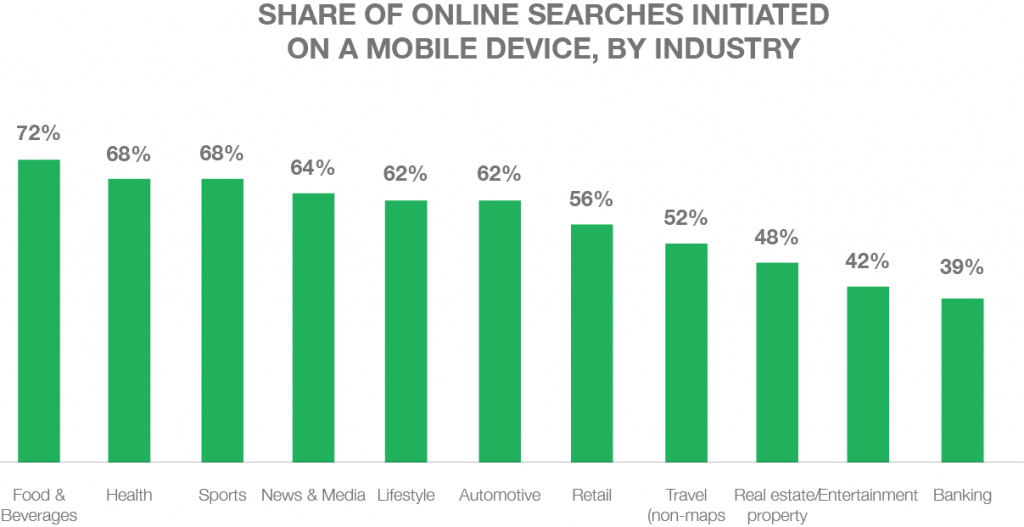
According to Mary Meeker’s 2017 Internet Trends Report, the typical US consumer spends more than 3 hours per day on their mobile devices. 2018 will be the year to maximize share of mobile search and establish robust strategies around mobile. Searches from mobile devices that include the word “best” have grown by 80% in the past two years.
The chart below shows the percentage of searches carried out on a mobile device across different industries and shows interesting variance by industry.

For most verticals, mobile share has surpassed 50%. With mobile replacing the desktop as the primary search platform, search engines worry that slower connections will create poor user experiences. Google has already tested mobile-first indexing for many verticals and plans to start rolling it across all industries this year. Mobile first indexing means that sites with outstanding mobile experiences are likely to be ranked higher than those that provide a poor mobile experience.
MOBILE FIRST USER EXPERIENCE
The term “mobile first” has been around nearly as long as the smartphone itself. What does the term mean though? For a long time, “responsive” websites were considered mobile-first designs – and many still cling to that belief. Mobile First, however, is a completely different approach to designing user experiences that will take center-stage in 2018.
The key concept behind mobile first is to design your website for mobile intent, not desktop user intent. Users learned to use mobile devices with apps, that means they want a rich, app-like experience – even more so when they are processing transactions on mobile devices. Make it easy for them with calls to action that are clearly visible – whether these are prices or buying products and services. The site technology can be adaptive or responsive, but the UI (User Interface) must provide a true, “app-like” mobile experience.




